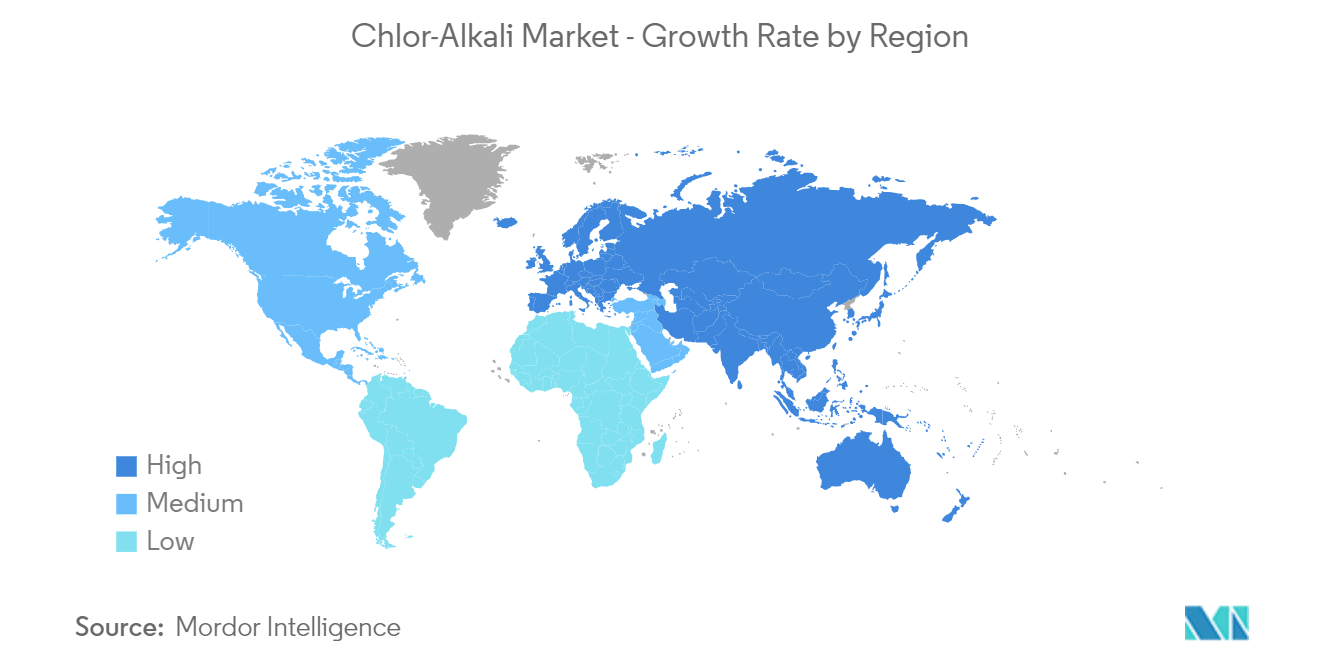Market Trends of Chlor-alkali Industry
The Organic Chemical Segment to Dominate the Market
- Chlorine, produced as a co-product in the electrolysis of brine during chlor alkali production, serves as a crucial feedstock in producing numerous organic chemicals. Chlorine is a versatile building block in organic synthesis, forming the basis for the production of chlorinated solvents, plastics, agrochemicals, pharmaceuticals, and other organic compounds.
- The largest consumer of chlorine is the plastics industry, particularly the production of polyvinyl chloride (PVC). PVC is widely used in construction materials, packaging, automotive parts, and various consumer goods. The demand for PVC drives significant consumption of chlorine, making the organic chemicals segment a major contributor to the chlor alkali market.
- Chlorine production and consumption continue to increase in its various end-user industries. According to Euro Chlor, by the end of December 2023, chlorine production in Europe climbed to 609,418 tonnes. On average, in December 2023, there was a decrease of 1.7% in daily production compared to November 2023 (which saw 19,659 tonnes) but an increase of 18.6% compared to December 2022 (with 16,573 tonnes).
- According to the data published by the Euro Chlor, Germany produced 5.4 million metric tons of chlorine in 2022, accounting for the country's largest chlorine production capacity.
- As per the BASF Report 2023, chemical manufacturing worldwide, not including the pharmaceutical industry, is anticipated to expand by 2.7% in 2024, a rate higher than the year before (2023: +1.7%). In China, which holds the top position in the global chemical market, a decrease in growth but still significant expansion of 4.0% compared to the robust growth in the year prior (2023: +7.5%) is anticipated.
- Thus, the factors mentioned above are expected to increase the demand for chlor alkali in the upcoming period.

Asia-Pacific to Dominate the Market
- Asia-Pacific is home to rapidly growing economies such as China, India, and Southeast Asia, which are experiencing robust industrial growth. This growth drives the demand for chlor alkali products in various industries, including construction, manufacturing, chemicals, and textiles.
- Asia-Pacific has a large manufacturing base, particularly in industries that are significant consumers of chlor alkali products such as PVC, textiles, and chemicals. The region's manufacturing sector accounts for a significant portion of global chlor alkali consumption.
- Additionally, as per China's State Council Information Office, the total profits of China's leading textile companies increased by 7.2% Y-o-Y in 2023. In the same year, China's exports of textiles and clothing reached USD 293.6 billion. The exports of textiles and clothing began to grow again in December 2023, showing a 2.6% increase from the previous year.
- Moreover, according to Invest India, India accounts for 4% of the worldwide textile and clothing trade. It is projected to reach USD 250 billion in textile manufacturing and USD 100 billion in exports by 2030.
- Furthermore, according to the data released by the National Bureau of Statistics of China, 6.98 million metric tons of plastic products were produced in December 2023 in China.
- Thus, the factors mentioned above are expected to increase the market demand for chlor alkali in Asia-Pacific.


